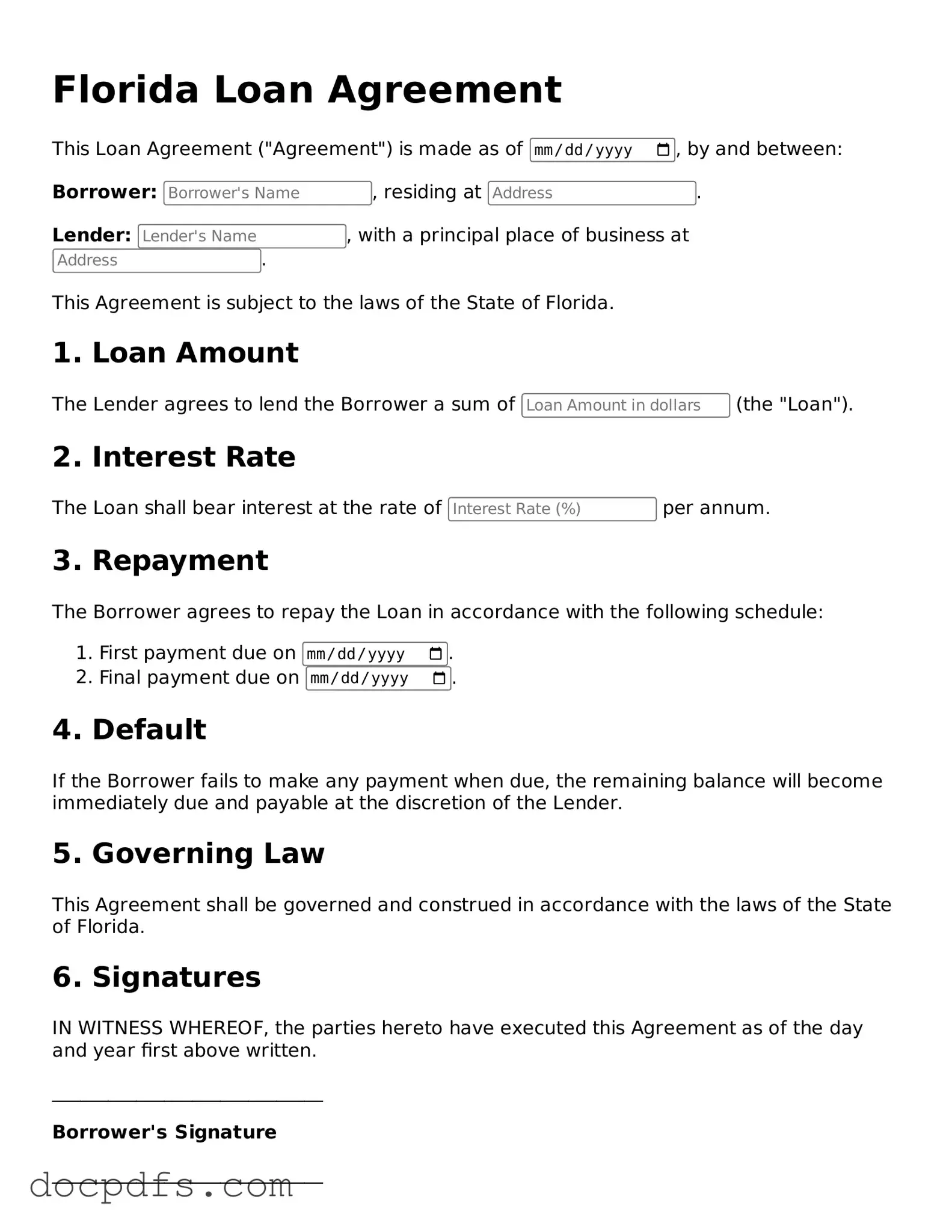A Florida Loan Agreement form is a legal document that outlines the terms and conditions of a loan between a lender and a borrower in the state of Florida. This agreement specifies the amount borrowed, interest rates, repayment schedules, and any collateral involved. It serves to protect both parties by clearly stating their rights and responsibilities.
Who needs a Florida Loan Agreement?
Anyone who is lending or borrowing money in Florida should consider using a Loan Agreement form. This includes individuals, businesses, and financial institutions. Whether it's a personal loan between friends or a business loan, having a written agreement can help prevent misunderstandings and disputes down the line.
What should be included in a Florida Loan Agreement?
A comprehensive Florida Loan Agreement should include the following key elements:
-
Loan Amount:
Clearly state how much money is being borrowed.
-
Interest Rate:
Specify the interest rate, whether it’s fixed or variable.
-
Repayment Terms:
Outline the repayment schedule, including due dates and payment amounts.
-
Collateral:
If applicable, describe any collateral securing the loan.
-
Default Terms:
Detail what happens if the borrower fails to repay the loan.
-
Signatures:
Both parties must sign and date the agreement.
Is a Florida Loan Agreement legally binding?
Yes, a Florida Loan Agreement is legally binding as long as it meets certain requirements. Both parties must agree to the terms, and the agreement must be in writing. Additionally, it must comply with Florida state laws to be enforceable in court.
Can I modify a Florida Loan Agreement after it has been signed?
Yes, modifications can be made to a Florida Loan Agreement after it has been signed, but both parties must agree to the changes. It is advisable to document any modifications in writing and have both parties sign the amended agreement to ensure clarity and legal enforceability.
What happens if the borrower defaults on the loan?
If the borrower defaults, the lender has the right to take specific actions as outlined in the Loan Agreement. This may include seeking repayment through legal channels or seizing collateral if applicable. The terms regarding default should be clearly defined in the agreement to avoid confusion.
Do I need a lawyer to create a Florida Loan Agreement?
While it is not mandatory to have a lawyer draft a Florida Loan Agreement, it is highly recommended. A legal professional can ensure that the document is comprehensive, complies with state laws, and protects your interests. However, many templates are available online for those who prefer a DIY approach.
How can I ensure my Florida Loan Agreement is enforceable?
To ensure that your Florida Loan Agreement is enforceable, follow these guidelines:
-
Make sure the agreement is in writing.
-
Include all necessary terms, such as the loan amount, interest rate, and repayment schedule.
-
Have both parties sign and date the agreement.
-
Consider having the agreement notarized for added legal weight.
Where can I find a Florida Loan Agreement template?
Florida Loan Agreement templates can be found online through various legal websites, as well as in legal stationery stores. Ensure that any template you choose is tailored for Florida laws and includes all necessary components to meet your specific needs.
What are the consequences of not having a Loan Agreement?
Not having a Loan Agreement can lead to significant complications. Without a written document, it may be challenging to prove the terms of the loan in case of disputes. This lack of clarity can result in misunderstandings, financial losses, or even legal battles. Having a formal agreement helps protect both the lender and the borrower.
